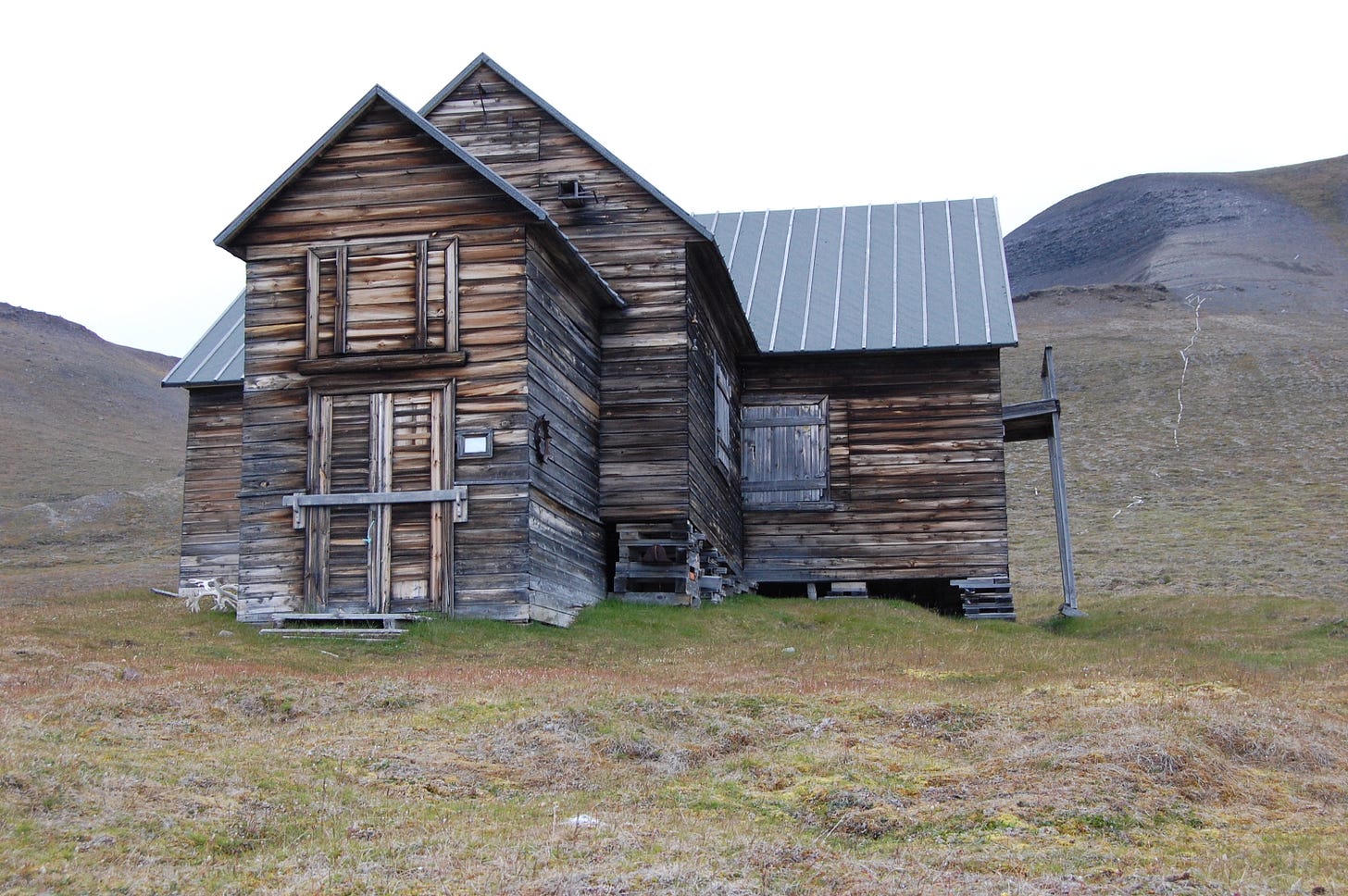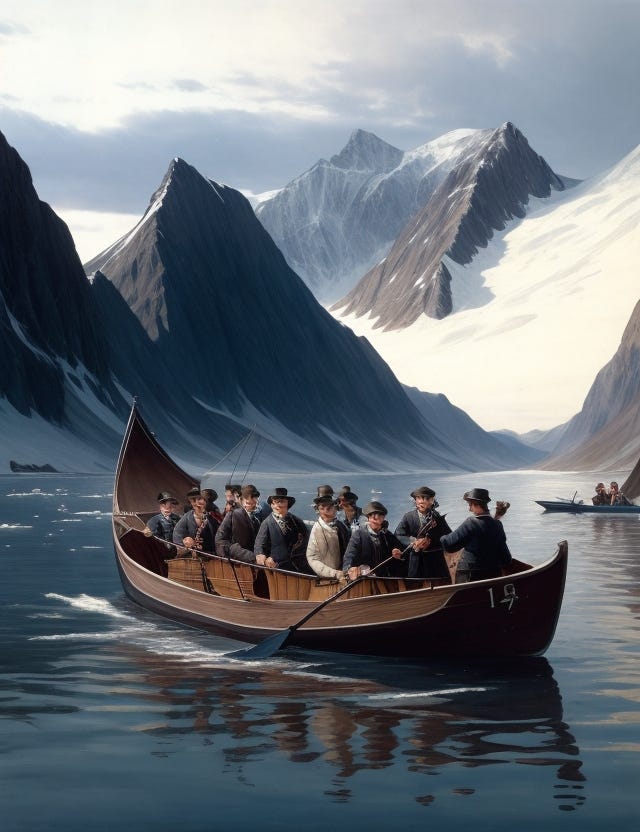The Haunting Story of 17 Lost Arctic Explorers
Unlocking the Arctic Mystery: 17 Explorers' Puzzling Demise.
In September of 1872, a group of 58 Norwegian hunters found themselves in a dire situation. Their six ships had become ensnared in the unforgiving grip of the Arctic ice, leaving them stranded in the northern reaches of Svalbard. With no hope of escape, seventeen of the men rowed 350 kilometers to reach the so-called “Swedish house”. It had everything they needed to survive the winter: dried, salted, and canned food, fuel for warmth, and even a collection of books.
However, within a mere six months, they were all found dead. There were no signs of accidents or violence, and their deaths were not a result of starvation.
So, why did they die?
Chapter I — Svalbard, Who?
Svalbard, also known as Spitsbergen, lies north of mainland Europe, about halfway between Norway and the North Pole. The island was first discovered by the Dutchman Willem Barentz in 1596. In the centuries following the discovery, English, Danish, Dutch, and French ships started to land on the island to hunt walrus, polar bears, and seals. In the 20th century, mining of coal was introduced on the island. But enough about the island’s history.
This story takes place in September of 1872 when six ships, bearing a total of 58 men, were preparing to embark on their journey back to Norway. However, as the men readied their vessels, the temperature plummeted to a bone-chilling -29 degrees Celsius. The world around them turned into a frozen, white abyss as ice surrounded their ships. The men made efforts to try to force the ships through the ice, but these efforts were all in vain. The men were in a dire circumstance. They didn’t have enough rations and little to no fuel to keep warm during the cold polar winter. As this dawned on the men, a sense of hopelessness descended upon their camp. This was until one of the men remembered that there was a scientific expedition run by the Swedish Nobel laureate and explorer, Adolf Erik Nordenskiöld, who had planned to spend the winter in these unforgiving lands, aiming to become the first ever to do so.

The men devised a plan. Seven of the 58 men would venture over the ice to Polhem, some 40km away, where the expedition had set up their base for the winter.
Exhausted and frostbitten, the men rejoiced at the sight of distant light, invigorated by the prospect of salvation. Their hopes were pinned on the house before them. With trembling hands, they knocked on its door, seeking refuge and sustenance.
Nordenskiöld himself answered the door, his facial expression marked by worry. He delivered the somber news that his expedition had already swelled in size due to other sailors trapped in the ice, and their provisions were stretched to the breaking point. However, he had a lifeline to offer. There was another house on the island, a few days' rowing away, but it contained all the essentials they needed: shelter, provisions, and fuel to stave off the unforgiving Arctic cold. Nordenskiöld suggested that some of the hunters go to this house for the winter and that he would do his best to help the remainder of the men that stayed on the ships.
Chapter II: The journey to the “Swedish house”.
The seven men returned to the rest of the crew, and togheter they devised a plan: Seventeen of the men would row to the house, while forty-one of the men would remain with the ships.
On the 8th of October, approximately a month after the ships became trapped in the ice, the 17 men embarked on their journey. Their arduous trip lasted for a full week, as they battled against harsh weather and unforgiving cold.
Finally, on the 14th of October, the men set their eyes on the house that would shelter them through the winter.
As the men settled into the house, they engaged in hunting polar bears and reindeer for sustenance for a few weeks. However, this was made impossible when the sun set for the last time on the 21st of November, not to be seen again for two and a half months (!), marking the beginning of the polar night. As the men settled into what must have felt like permanent darkness, their circumstances began to deteriorate rapidly. By the 2nd of December, two men were reported as sick; by Christmas, all of them had fallen ill. Tragically, on the 19th of January, two men succumbed to "hard sickness." In February, two more perished, followed by five more in March. The last member of the group likely passed away just before they were discovered on the 16th of June by members of a hunting expedition.
Chapter III: What happened at the Swedish house?
Theory #1: When the men were found by the hunting expedition in June, the hunters discovered four men lying lifeless in the living quarter. In an adjoining room, six more bodies sprawled across the floor. Outside, they found the remainder of the group, with five men covered by a tarpaulin and two others resting in shallow graves.
The deceased men were gathered up and given a final resting place in a common grave. The hunters who found the men wrote a report on the incident, in which they attributed the deaths to scurvy, further highlighting what they believed to be a lack of diligence and leadership, which had allowed scurvy to take hold despite ample food supplies and available preventative measures.
As word of this tragic incident reached Norway, the seventeen men were enveloped in a cloud of dishonor and shame. Their failure to prevent scurvy, despite having the means to do so, cast a dark shadow over their legacy, leaving them with little honor in the eyes of their compatriots. One of the fathers of the dead men has even been said to have committed suicide because of the shame he felt.
Theory #2: In 2008, a scientific expedition was launched to find out the truth of what happened to the men who died at the Swedish house. The scientists opened up the grave where the first men to die were buried. Upon examination of the bones, they could completely rule out scurvy as a valid diagnosis. Scurvy would have caused generalized osteopenia, which is a loss of bone density. The bones found in the grave had a normal bone density.
The scientists instead had another hypothesis which they tested: Lead poisoning from the canned food. The results showed that the bones contained a concentration of 102 μg lead/g. This is on the lower end of what is considered deadly for humans. However, this number described the deadly amount from intake over one year. The men in the grave had reached such a concentration in just two weeks.
The lead poisoning hypothesis would also explain why the men started getting sick during December. That's when they started to rely more heavily on the canned food for nutrition. Before this, they ate whatever they managed to hunt.
Chapter IV: What about the men left behind on the ships?
What makes this story even more tragic is the fact that if the seventeen men had just stayed a few more weeks with their ships, they would have escaped the ice and made their way home.
This is exactly what happened to 39 of the men who stayed with the ships; the ice broke up, and they escaped in two ships. The remaining two, who chose to stay with the remaining ships and died from scurvy in April of 1873.
Thanks for reading:)






